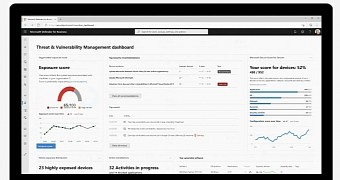Microsoft Defender has become a leading piece of security software, and Microsoft is working around the clock on bringing it to as many customers and platforms as possible.
The company’s latest focus is small and medium businesses (SMB), as Microsoft says that no less than one in four such companies experienced a security breach in the past year due to the lack of proper software to protect their devices.
Enter Microsoft Defender for Business.
Built as an all-in-one security solution, Microsoft Defender for Business is supposed to provide customers with enterprise-grade endpoint security.
This involves everything from traditional antivirus protection against malware and modern threats like ransomware to detection and response capabilities.
“With Defender for Business, SMBs get multilayered protection, detection and response, spanning the five phases of the National Institute of Standards and Technology (NIST) cybersecurity framework — identify, protect, detect, respond and recover — to protect and remediate against known and unknown threats,” Microsoft explains.
“Defender for Business comes with built-in policies to get customers up and running quickly. The automated investigation and remediation capabilities in Defender for Business help automate the type of work handled by dedicated SecOps teams, by continuously detecting and automatically remediating various threats.”
As compared to the version of Microsoft Defender that everybody knows (the one that comes bundled with Windows), this new version aimed at SMBs doesn’t come with a free license. Customers can choose to buy it stand-alone for $3 per user, but on the other hand, it’s also part of Microsoft 365 Business Premium.
“Defender for Business and Microsoft 365 Business Premium give partners new opportunities to help secure customers at scale with value-add managed services. Both solutions integrate with Microsoft 365 Lighthouse, which was made generally available on March 1, 2022, so Microsoft cloud service providers can view security incidents across tenants in a unified portal,” Microsoft says.

 14 DAY TRIAL //
14 DAY TRIAL //